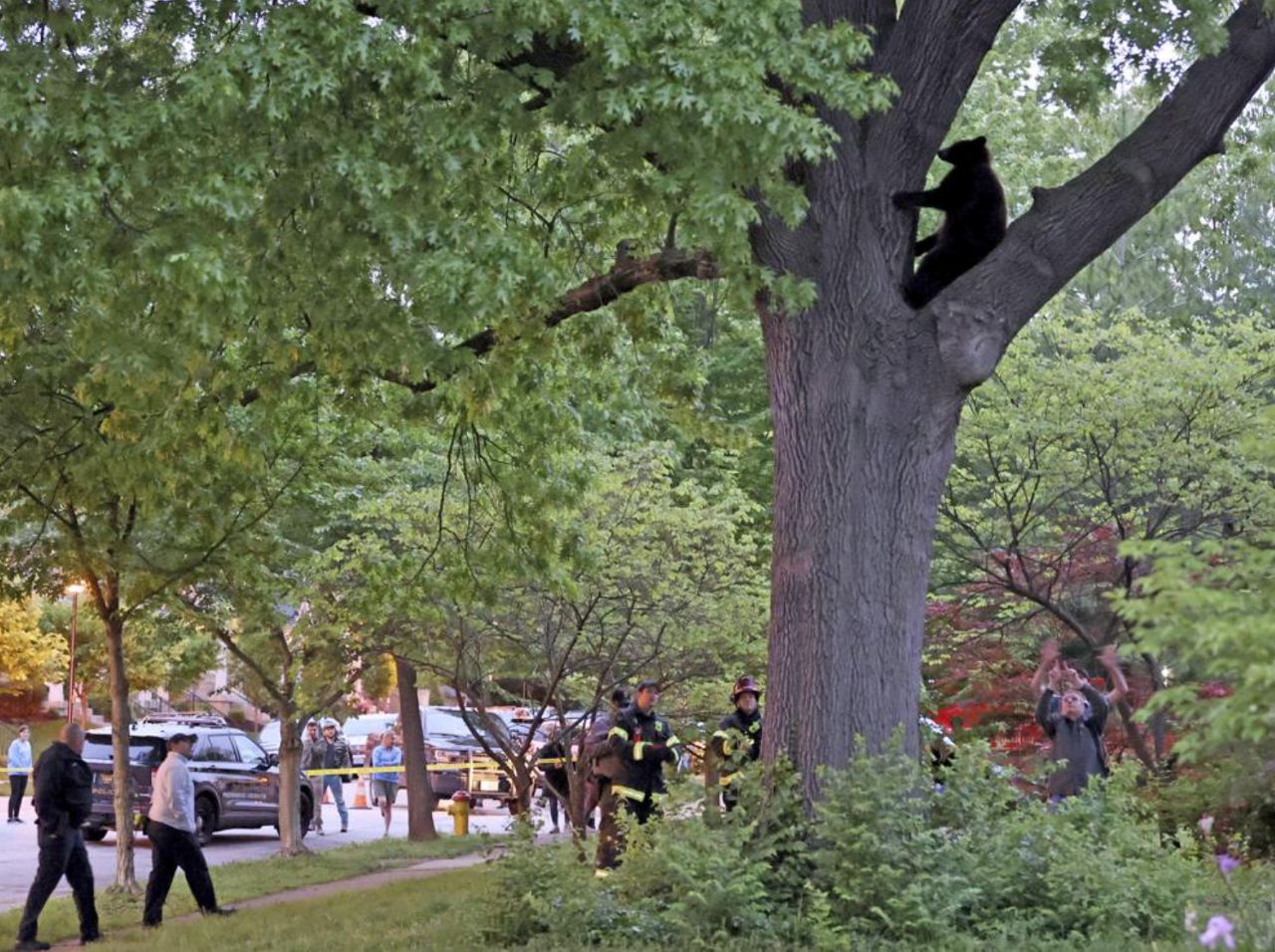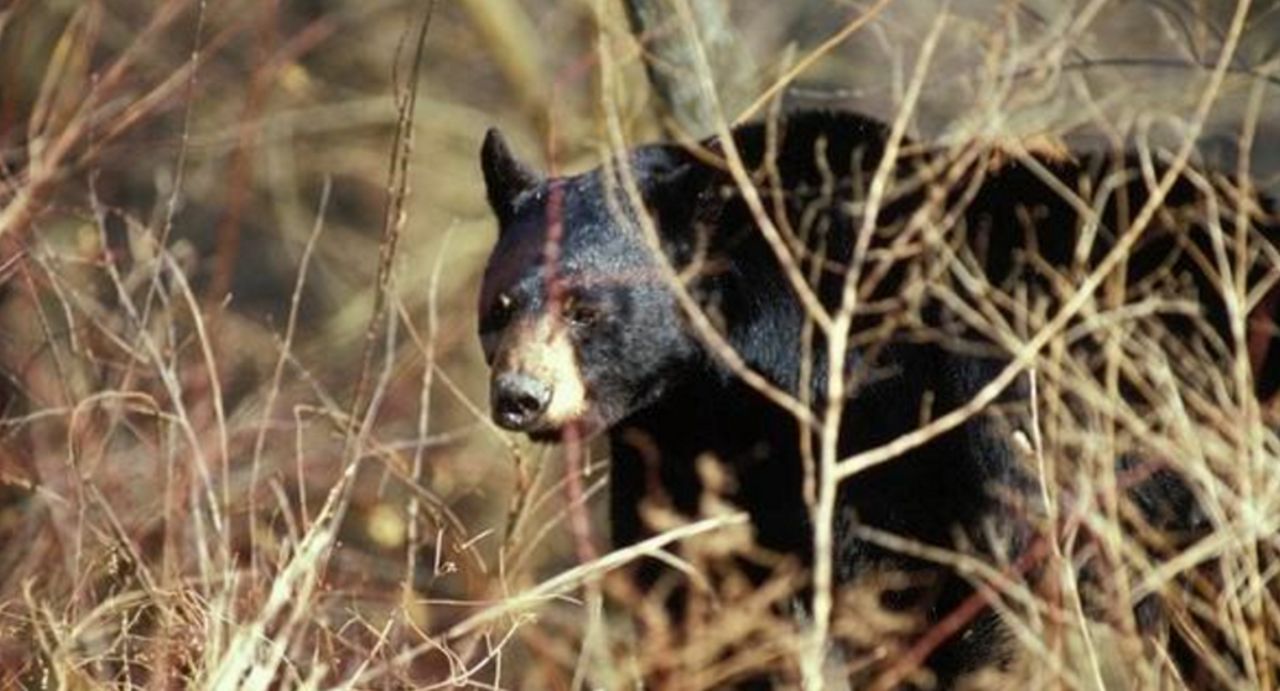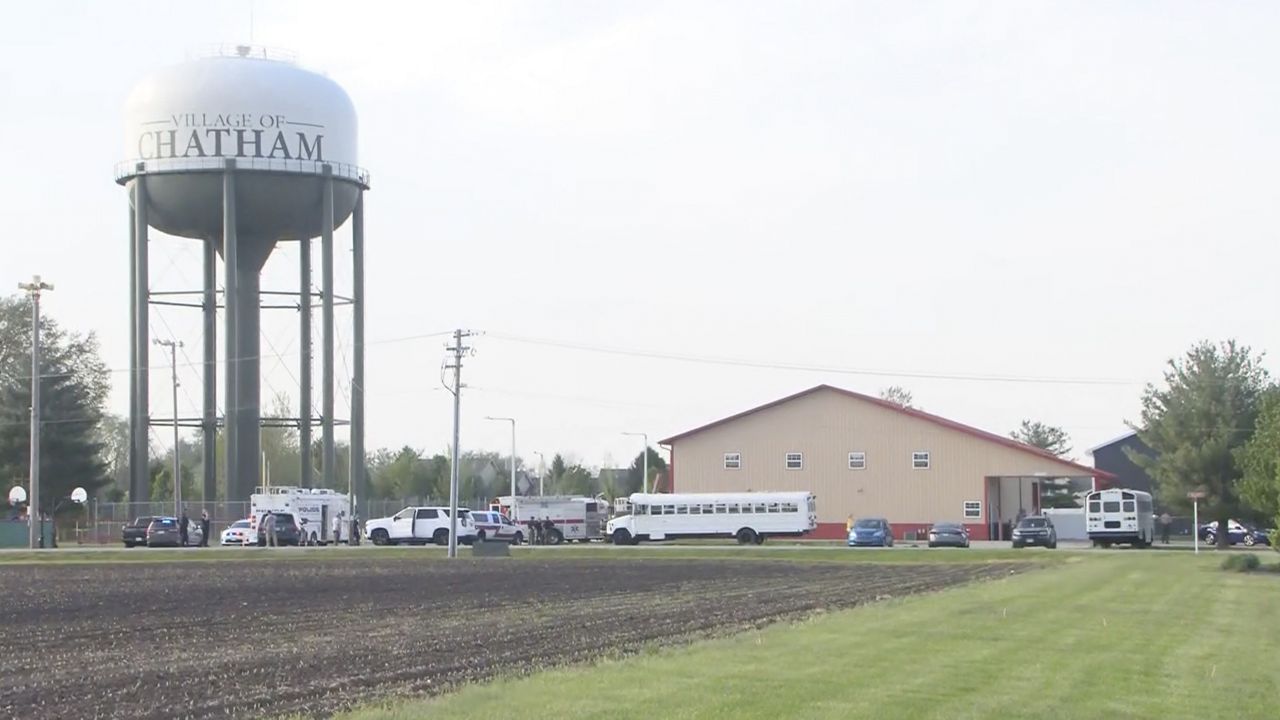ST. LOUIS – The spring and early summer is when bears are on the move, and the Missouri Department of Conservation (MDC) is urging people to be aware as black bears are becoming a growing part of the St. Louis regional landscape.
The MDC says it is common to receive reports of bears in counties like Jefferson, Washington and Crawford, but nearly a year ago, a male black bear created a stir wandering through St. Louis County into Richmond Heights, where it was immobilized and relocated to a habitat outside the urban corridor.

There are about 800 black bears in Missouri, according to ongoing research by the MDC. Only the American black bear can be found in the state, but you may spot them in multiple color phases that can have their fur appearing to be brown, red or cinnamon in color.
A majority of the bears live in southern Missouri and the data shows the population is growing about 8% each year, according to the MDC. The research also shows the population is expanding in range, which has bears showing up farther north and closer to St. Louis. Missouri also had its first bear hunting season last year. The hunt was allowed due to the animal’s growing population in the state.
The MDC explains this time of year is the prime time for bears to be on the move. Younger bears will wander to find food or a new area to settle, and adult males will move large distances searching for females.
How to avoid conflicts with bears
The key to avoiding conflict with bears is to not leave food out, according to the MDC. Officials say the last thing a homeowner should do is lure them with food. Feeding bears can not only make them comfortable around humans, but officials say they can also cause significant property damage.
MDC suggests the following tips to avoid issues if a bear has been sighted in the area.
Store garbage, recyclables and compost inside a secure building or in a bear-proof container or location.
Regularly clean and disinfect trash containers to minimize smells that could attract bears.
Keep grills and smokers clean and store them inside.
Don’t leave pet food outside. Feed pets a portion at each meal and remove the empty containers.
Refrain from using birdfeeders in bear country from April through November. If in use, hang them at least 10 feet high and 4 feet away from any structure. Keep in mind that even if a bear cannot get to the birdseed, the scent could still attract it to the area.
Use electric fencing to keep bears away from beehives, chicken coops, vegetable gardens, orchards, and other potential food sources.
MDC says black bears are generally shy and non-aggressive. They offer these tips to stay safe when hiking and camping in bear country:
Never deliberately offer a bear food!
Keep campsites clean and store all food, toiletries and trash in a secure vehicle or strung high between two trees.
Do not keep food or toiletries in a tent, and do not burn or bury garbage or food waste.
Make noise, such as clapping, singing or talking loudly, while hiking to prevent surprising a bear.
Travel in a group if possible.
Keep dogs leashed.
If hiking or camping in bear country, consider carrying bear spray. Read the instructions carefully and keep bear spray immediately available on your belt or your pack’s waist strap, not buried inside your pack.
Be aware of surroundings. If there are signs of a bear, such as tracks or scat, avoid the area.
Leave bears alone! Do not approach them, and make sure they have an escape route.
For more on black bears in Missouri, go to mdc.mo.gov/bearaware. You can report bear sightings and submit photos online at mdc.mo.gov/reportbears.








